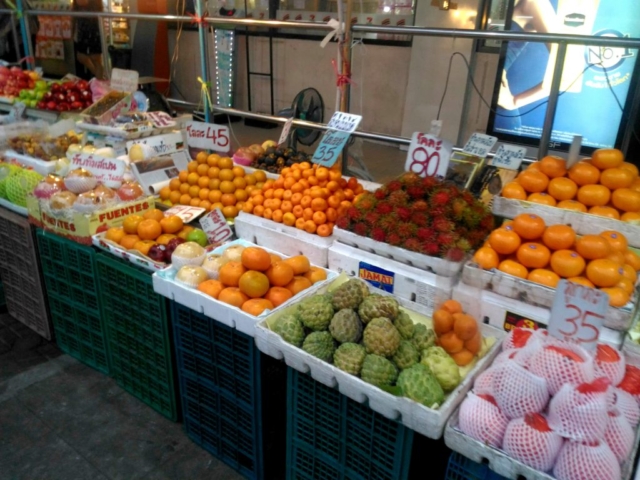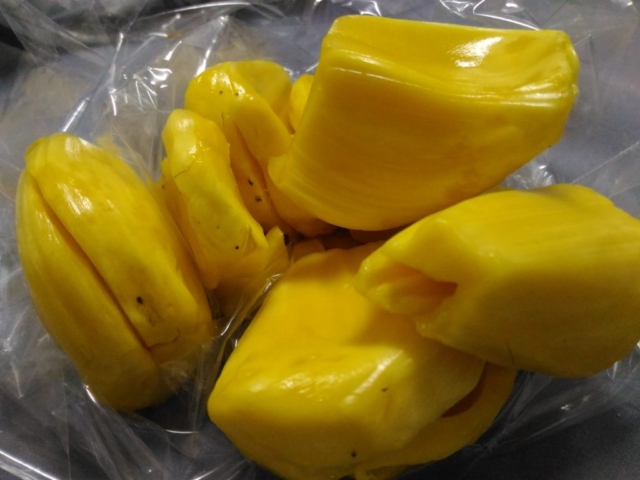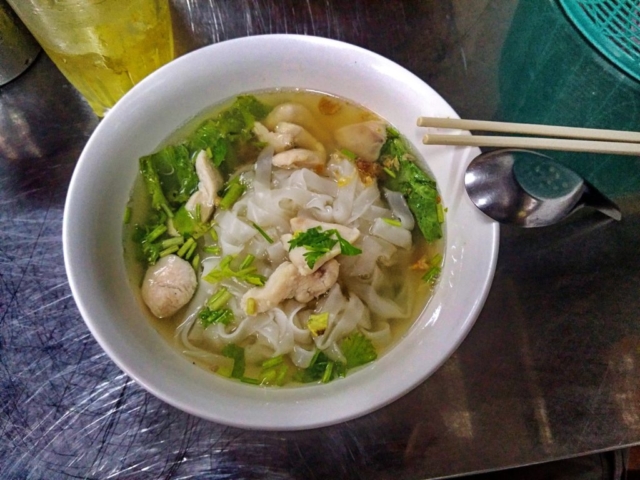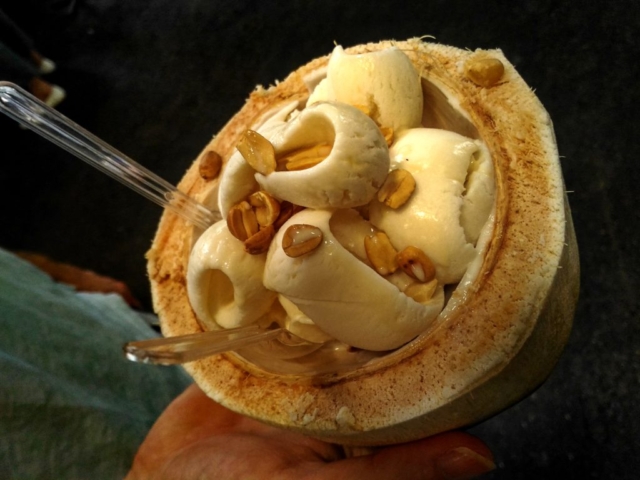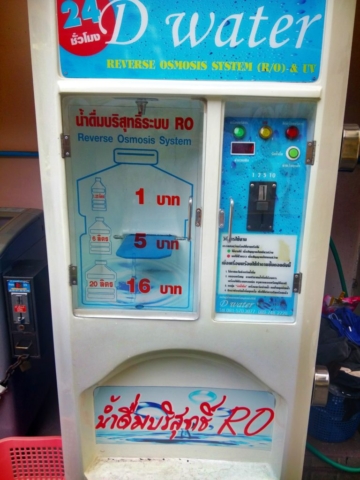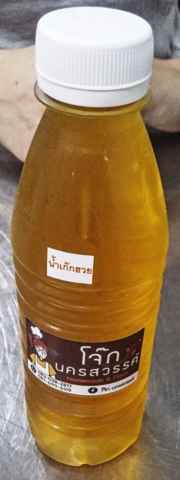Thai cuisine emphasizes lightly prepared dishes with strong aromatic ingredients and spices. In 2017, a total of 7 Thai dishes appeared on the list of “World’s 50 Best Foods”.
Thai cuisine is more accurately described as 5 regional cuisines, corresponding to 5 major regions of Thailand. Each of them is specific. Regional differences tend to have something to do with neighboring states.
- North Thai Cuisine – Shared with Shan in Burma, North Laos and Yunnan Province in China.
- Isaan Kitchen (northeastern Thailand) – resembles the kitchen of southern Laos and is also influenced by Khmer cuisine from Cambodia.
- South Thailand – dishes served with coconut milk and fresh turmeric are very similar to Indian, Malay and Indonesian cuisine.
- Thai royal cuisine – has had a great impact on the kitchen in the central area of Thailand.
- The dishes served in Bangkok have been greatly influenced by Asian, European and Western cuisine.
Many popular dishes originally came from China. These include, for example, chok (rice bran), salapao (baked buns), kuaitiao rat na (fried rice noodles) and khao kha mu (steamed pork with rice). The Chinese also introduced a frying technique, several kinds of noodles, taochiao (fermented beans), soy sauce and tofu.
The most notable influence from the West was the import of chilli peppers from America. Chili peppers and rice are today the two most important ingredients of Thai cuisine.
Etiquette of dining
In previous time, food was eaten by hands, and from the end of the 19th century, people started to use a fork (left hand) with a spoon (right hand). A spoon is always inserted into the mouth and the knife is not used at all.
Chopsticks are used mainly for consuming Chinese noodle soups, or in Chinese, Japanese and Korean restaurants. One of the principles of dining is mixing the flavors and textures of several dishes on a plate with a rice
Thai dishes usually consist of rice (khao). All meals are served at the same time, including soups. Everytime, more dishes on the table than people around.
In most Thai restaurants, you can choose from some Thai sauces and spices to make your meal. These include fish sauce, lime juice, sliced chili and garlic, dried chili flakes, sweet chili sauce, sliced chilli peppers in rice vinegar and sugar.
Ingredients
Common tastes in the dishes come from garlic, galangal, coriander, lemon grass, shallots, pepper, shrimp paste, fish sauce and chili. Palm sugar is used to sweeten, while tamarind dominates acidic tones. Meat is mainly pork and chicken, but in the menu appears duck, beef and buffalo. An important role in the Thai´s diet lies primarily in fish, crustaceans and molluscs
Rice and noodles
Rice varieties that are consumed here: jasmine, sticky (khao niao), red Cargo and black sticky. Noodles are usually made from rice, wheat or mung flour.
Pastes and Sauces
Fish sauce is a basic ingredient of Thai cuisine and gives food a unique character. It is prepared from fermented fish. Another type of sauce from fermented fish is pla ra. It is much sharper than nam pla, and often contains pieces of fish. Kapi, a Thai shrimp paste, is a combination of fermented shrimps and salt. It is used in the famous chili paste. Tai Pla is a pungent sauce used in southern Thai cuisine, which is made from fermented internal fruit of the spotted mackerel (pla thu).
Nam phrik are Thai chili pastes, similar to the Indonesian and Malay sambals. Each region has its own special versions.
Soy sauces are of Chinese origin. Si-io dam (dark soy sauce), si-io khao (light soy sauce), si-wo (sweet soy sauce) and taochiao (fermented whole soybeans). Namman hoi (oyster sauce) is also of Chinese origin.
Vegetables, herbs and spices
Commonly used herbs in Thai cuisine include coriander or leaves of coriander, spearmint, basil, ginger and turmeric. Sometimes trees are also used, such as Acacia pennata. These leaves can be cooked in omelets, soups and curries or consume raw in salads. Banana leaves are often used as packaging for ready meals.
Other ingredients include a few types of eggplant, beans, bean sprouts, Chinese cabbage, bamboo sprouts, chili peppers, tomatoes, cucumbers, sweet potatoes and corn.
Fruit
Fresh fruit forms a large portion of Thai diet and usually is served as a dessert after a meal. Either alone or with sugar, salt and chili. At the same time it plays an important role in spicy salads (e.g. green papaya, pomelo), soup with tamarind juice and Thai curry (jackfruit curry, with pineapple or grapes).
There is a lot of papaya, jackfruit, mango, mangosteen, langsat, longan, pomelo, pineapple, pink apple, durian and Burmese grapes. Every year, the World Durian Festival (beginning of May) is held in Chantaburi.
Coconut milk is produced from coconut nuts and used in curry and desserts. Fresh coconut water, on the other hand, refreshes in the heat and delivers minerals and electrolytes. Grated pulp is used raw or roasted on sweets.
Apples, pears, peaches, grapes and strawberries that were predominantly imported in the past are becoming very popular. Fruit benefits the colder northern highlands. It is here that this fruit has begun to grow as a substitute for previously grown opium. Together, there are also cabbages, tea and arabica coffee.
Breakfast
Khao chao (breakfast rice) – breakfast dishes are very limited and very often they can consist of the same ingredients as for lunch and dinner. Rice is fried or in the form of a soup, or served with omelette, fried / grilled meat or mixed vegetables.
Chok – rice mash
Khao khai chiao – omelette with white rice, often with chilli sauce and cucumber slices
Khao Tom – rice soup, usually with pork, chicken, fish or shrimp
Pathongko – Thai version of Chinese fried bread, which can be enriched with chocolate and sweetened condensed milk
Nam taohu – soy milk served with sweet jelly
Soups and Curry
Tom yam goong – spicy, sour soup with prawns, lemon grass and galangal.
Tom kha gai – Thai version of chicken soup with coconut milk that is flavored with galangals, mushrooms and a little chili.
Gaeng ped – red curry, which is particularly tasty with baked duck.
Gaeng khew-waan – sweet green curry with coconut base with strong accents of lemon grass and lime.
Gaeng I am – yellow curry, but it’s more like a tamarind soup.
Khao Soi – noodle soup enriched with coconut milk, decorated with crunchy fried wheat noodles and served with pickled cabbage, chili paste and shallo.
Meals for lunch and dinner
Khao phat – fried rice usually served with meat (chicken, shrimp, crab), egg, onion, garlic, and sometimes tomatoes. Taste enriches soy sauce, sugar, salt, Chilean and fish sauce.
Khao man kai – boiled rice served with roasted chicken meat, cucumber and chicken broth. The added sauce is made from yellow soya party, dark soy sauce, chili, ginger, garlic and vinegar.
Pad Thai – Fried rice noodles sold all over Thailand as street food. Rice noodles are fried with egg and sliced tofu. You can add tamarind and fish sauce, dried shrimps, garlic or shallots, red chili pepper, palm sugar and chopped peanuts. They can also contain other vegetables such as beans, pickled radishes, rape and raw bananas. Likewise, they can be served with fresh shrimp, crab, octopus, chicken, etc.
Desserts
In Thailand, desserts are not the same
Khanom
Khao
Waan Yen – is literally a sweet cooler, which consists of a pile of ingredients of your choice (e.g. sweet corn, syrup, coconut cream with a pile of ice).
Khao lam – sticky rice (white or black) with coconut milk that contains taro or black bean and everything is filled in the bamboo.
Bua
Kluay buat-chi – banana in coconut milk. Dessert is very fast and cheap.
Ice cream – most often you find coconut
Insect
Many markets in Thailand sell fried grasshoppers, crickets, bee larvae, silkworms, ants eggs, and termites. Most insects taste quite gently, like popcorn and prawns. But the best choice is insect served with chili and garlic
Street stalls and markets
The quality and choice of street food in Thailand is world renowned. Bangkok is often cited as the capital city of street food in the world.
Drinks
Tap water is not drinkable in Thailand
Coconut water – directly from fresh coconut is cheap and the ideal choice for cooling the body.
Fruit juices and shakes of all kinds – very popular, costs 20-40 THB. A bottle of freshly squeezed sweet orange juice costs 15-30 bahts.
Thai Ice Tea – is one of the most
Naam
Coffee (
Herbal juices are another typical example of popular beverages.
- Naam grajee yeb (roselle juice) – it supplies the body with high levels of vitamin A
- Lemon grass – bitter but medicinal juice, as it helps digestion, reduces fever, blood pressure and treats acne
- Bael water – helps to refresh the body and to heal stomach ulcers
- Pomegranate juice – helps to treat diabetes
- Butterfly Pea water – adds energy, helps treat diabetes and increases blood flow
Alcohol
Sale of alcohol in supermarkets, shops, etc. is prohibited from midnight to 11:00 am and from 14:00 to 17:00. Restaurants and bars do not have this ban. During religious holidays, sales may be restricted in bars and restaurants, but if you are staying at a hotel during this period, the ban is not applicable here
Whiskey – Incorrectly named Thai whiskey (lao)
- The best-known brand is Mae Khong (“Mekong”) and sweeter Saeng Som (“Sangsom”), made mainly from sugar cane and technical rum.
- The only similarity with whiskey is in brown shade and high alcohol content
Whiskey – true Thai whiskey (lao khao = “white liquor”)
- It is distilled from rice.
- White liquor with herbs added for taste and medical effect is called ya dong
Frankly: Both are illegal!
Rice wine
- It is a good beer that is made from sticky rice.
- It is sold nationwide under the Siam Sato brand
Beer
- Beer imported from the West is one of the top beverages and the price for a small bottle ranges from 50 to 100 THB.
- Local – for many years, Singha was the only brewed beer, but now there is Chang (cheaper and stronger)
- Premium Brands – Heineken and Tiger are among the two most popular.
Tips for local restaurants
Thai Pancake Shop 2 – Koh Lipe
Walking Street
Tambon Ko Tarutao
Amphoe Mueang Satun
Chang Wat Satun 91000
Grazie Thai Local Food – Wan Ton Noodle – Chiang Mai
167 Mun Mueang Rd
Tambon Si Phum
Amphoe Mueang Chiang Mai
Chang Wat Chiang Mai 50200
O-Oh Farm Suanluang – Phuket
1/1 Wirat Hong Yok Rd
Mueang Phuket District
Chang Wat Phuket 83000

